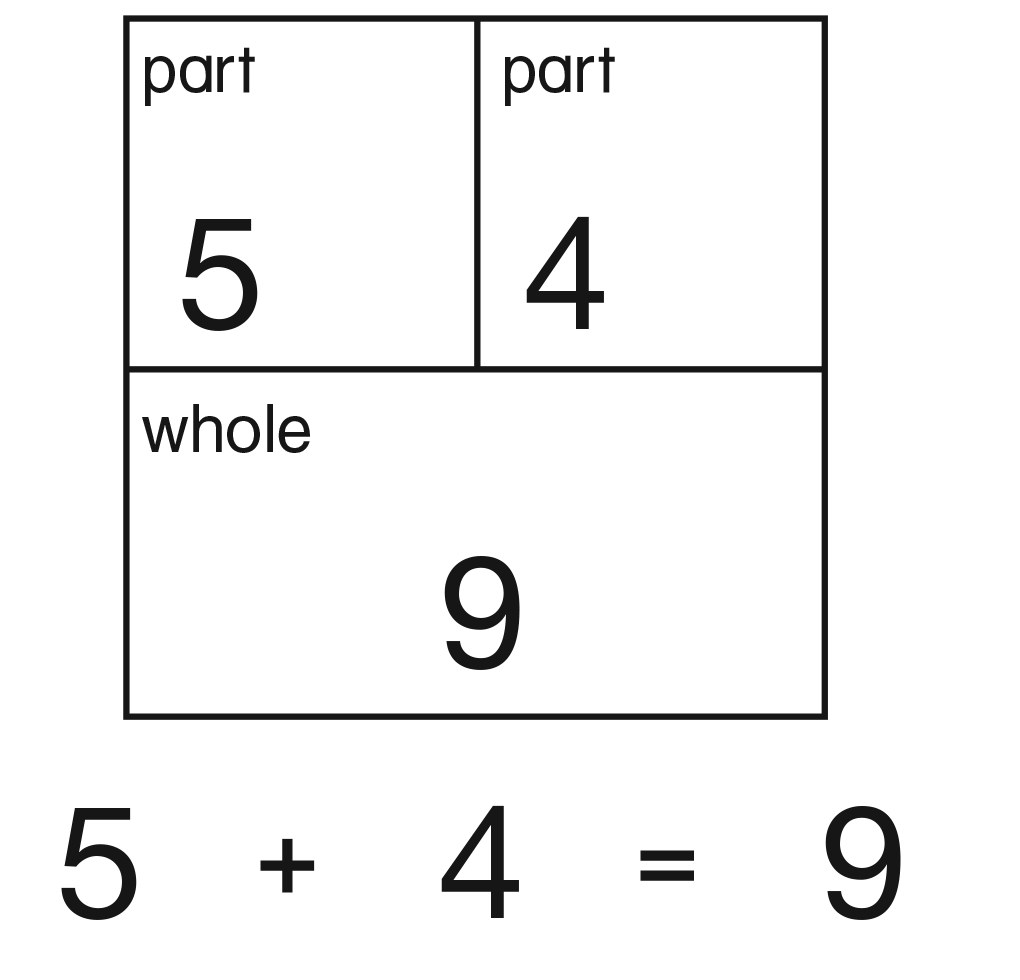|
|
Daily Practice and Problems |
Lesson |
Homework |
Assessment |
Student Book |
Student Activity Book |
|
|
|
|
Teacher Resources |
Teacher Guide - digital |
|
|
|
|
Supplies for Students
20 connecting cubes
Supplies for Student Pairs
scissors
tape or glue stick
markers
Materials for the Teacher
8 display copies of the Show a Word Problem Master (Teacher Guide)
Display of Math Practices (Student Activity Book) Reference
Display of the first page of Animal Trading Cards (Student Activity Book) Page 49
Animal Trading Cards Master (Teacher Guide), optional. See Materials Preparation.
Copies of Show a Word Problem Master (Teacher Guide), optional. See Materials Preparation.
Unit 1 Assessment Record
20 connecting cubes
chart paper
A Cache of Jewels and Other Collective Nouns by Ruth Heller, optional
Materials Preparation
Prepare Display of Problems. Write the following four problems in the box on copies of the Show a Word Problem Master. The first two problems will be used in Part 1 and the last two will be used in Part 2.
- There are 8 lions and 4 monkeys at the zoo. How many animals are there altogether?
- There are 11 fish in a bowl. Five of the fish are orange and the rest are green. How many are green?
- There is a colony of penguins. Four baby penguins are born. Now there are 13 penguins. How many
penguins were in the colony before the babies were born?
- A litter of puppies has 11 brown puppies. Another litter has 9 black puppies. How many more brown
puppies are there than black puppies?
Prepare Problems on Chart Paper. Write one problem for each pair of students on sheets of chart paper.
Problems can be repeated, if needed. Prepare space to display these problems, too.
- There were 7 monkeys and some joined them. Now there are 12 monkeys. How many joined them?
- There was a swarm of 15 bees in a tree. Eight of them flew away. How many are left in the tree?
- There are 14 fish in an aquarium. Five of the fish are orange and the rest are yellow. How many fish
are yellow?
- One pack of wolves has 9 wolves. Another pack has 4 more than the first pack. How many wolves
does the second pack have?
- There are 5 catfish and 2 small sharks in the aquarium. How many more catfish are there than
sharks?
- A herd of elephants is visiting a pond. Eight more join them. There are now 16 elephants at the pond.
How many were at the pond earlier?
Prepare Optional Targeted Practice. Place a few of the chart paper displays students made during the lesson,
copies of the Show a Word Problem Master, and a copy of the Animal Trading Cards Master in a learning
center. Ask students to write and then solve their own problems. Challenge students to write different types of
problems and solve each problem in more than one way. They can use the problems and solutions displayed
as inspiration.
















